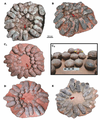File:Nanxiong Formation egg clutches.png

Size of this preview: 498 × 599 pixels. Other resolutions: 199 × 240 pixels | 399 × 480 pixels | 638 × 768 pixels | 851 × 1,024 pixels | 1,347 × 1,621 pixels.
Original file (1,347 × 1,621 pixels, file size: 2.18 MB, MIME type: image/png)
File history
Click on a date/time to view the file as it appeared at that time.
| Date/Time | Thumbnail | Dimensions | User | Comment | |
|---|---|---|---|---|---|
| current | 20:44, 30 September 2022 |  | 1,347 × 1,621 (2.18 MB) | PaleoNeolitic | w |
| 23:13, 14 July 2020 |  | 1,347 × 1,621 (2.15 MB) | PaleoNeolitic | {{Information |description ={{en|1=The oviraptorid clutches described in this study. All clutches were discovered from the Late Cretaceous Nanxiong Formation at a construction site in Dayu County, Ganzhou City, Jiangxi Province, China (25.386N, 114.369E) and now are reposited at various institutions (Table 2). All eggs are arranged in pairs with their blunt ends pointing towards the clutch center devoid of eggs. '''A'''. Top view of HGM-41H-V0074, a complete clutch with 30 eggs arranged in... |
File usage
The following pages on the English Wikipedia use this file (pages on other projects are not listed):
